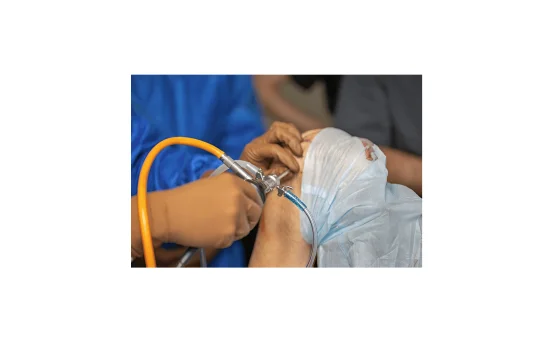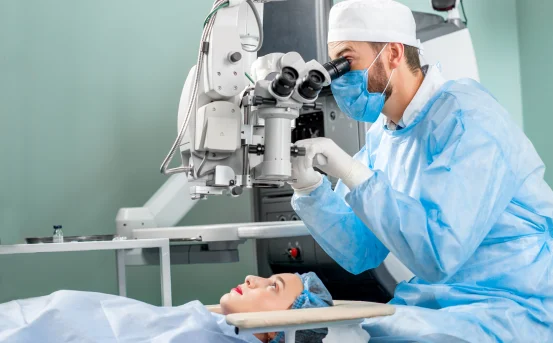Osteotomy surgery is an orthopedic procedure that involves correcting bone deformities by surgically cutting and reshaping bones. It is often done on the knee, hip, spine, or jaw. This surgery may alleviate pain, improve alignment, and postpone or prevent replacement surgery on the affected joint. So, what factors lead to causes for osteotomy surgery?
What is Osteotomy Surgery?
Understanding of causes for osteotomy surgery
Before explaining the reasons, it is necessary to discuss the details of an osteotomy surgery. The word **osteotomy** comes from Greek meaning “bone cutting”. In medicine, it refers to the surgical process of cutting and resetting the bone to correct deformities and enhance its function.
Types of osteotomy surgery are defined with:
- Knee osteotomy – arises from knee arthritis, joint aging, or misalignment of the joint.
- Hip osteotomy – congenital or acquired deformities of the femur head are the reason for performing this surgery.
- Spinal osteotomy – surgical treatment of progressive spinal curvatures like kyphosis or scoliosis.
- Jaw osteotomy – performed to correct occlusal relationship or aesthetically as a facial asymmetry.
The most common reasons for performing osteotomy surgery are:
- Osteoarthritis and Joint Degeneration
One of the leading causes of osteotomy surgery is osteoarthritis, especially in weight-bearing joints like the knee or hip. With time, upkeep of articular cartilages (for example the knee cartilage) results in progressive thinning of the supporting tissue (the cartilage) which eventually leads to rough articular surfaces, suffering, and restriction in movement and functioning of the joint. In advanced stages of degenerative changes, osteochondral realignment osteotomies can promote up to 50 or up to 70% pain relief and significantly postpone the need for total joint replacement.
- Congenital Bone Deformities
Congenital deformities like the bowed legs (genu varum) and knock-knees (genu valgum) pose risk of abnormal alignment of lower limb joints. Abnormal weight distribution can lead to discomfort. These deformities also pose risk of early degenerative changes impacting the joints. The osteotomy surgery allows the bones to be repositioned into the corrected position while preserving function and preventing further complications.
Examples:
- Children’s bone deformities.
- Hip dysplasia
- Tibial or femoral torsion
- Post-Traumatic Bone Injuries
Previous fractures or trauma-induced bone injuries may lead to improperly healed bones or joints resulting in considerable deformity. Over a prolonged duration, chronic pain, joint instability, and limited motion can set in due to unbalanced weight distribution and pressure aggravation because of misaligned bones or surfaces. Osteotomy is suggestively performed to restore anatomical alignment and correct the post-traumatic deformities.
- Developmental Conditions
Some developmental disorders such as Legg-Calvé-Perthes disease and Blount’s disease disrupt normative bone development and joint architecture. These developmental issues can lead to pain, deformity, and restricted mobility. Osteotomy can be effective insurgical intervention to alter the shape and anatomical position of the bones, especially in the growing age. This is performed to enhance the mechanics and function of the joints.
- Spinal Curvature Disorders
Surgical intervention for the correction of scoliosis, kyphosis, or ankylosing spondylitis requires spinal osteotomies in patients who present with these conditions in their advanced stage where posture, movement or even breathing becomes severely restricted. The surgery helps correct the curvature, reduce pain, and increase quality of life.
- Athletic Injuries and Occupational Stress
In younger individuals, particularly active ones and athletes, repetitive stress and sports injuries can cause ligament instability as well as uneven weight distribution in the knees. To alleviate osteoarthritis, proper alignment may be done using osteotomy, especially after conservative treatment has been attempted without success.
- Uneven Growth or Asymmetrical Limb Length
Discrepancies between two limbs can occur due to trauma, infection, or some medical conditions. This results in one limb growing slower than the other. Osteotomy can be performed to lengthen or shorten bones in order to attain symmetry. This can prevent long-term problems with gait and posture imbalance.
When Is Osteotomy Recommended?
Physicians might advocate for osteotomy in the following conditions:
- There is no benefit from conservative treatment options like physiotherapy or medication
- Pain and mobility issues have a substantial impact on everyday activities
- Imaging studies reveal some form of localized destructive arthritic changes or misalignment of the joint
- The patient is too young or physically active to undergo a joint revision
- The aim is to sustain the joint’s natural structure for as long as feasible.
Benefits of Osteotomy Surgery
- Preserves the natural joint in younger patients for a longer time
- Maintains the structure of the joint
- Alleviates pain while augmenting mobility
- Improves weight bearing distribution by correcting alignment
Enhances functional use of the joint along with improved postural alignment for the long term
Risks and Considerations
Like all surgical procedures, osteotomy comes with certain risks, including:
- Infection
- Thromboembolism
- Injury to nerves or blood vessels
- Impairment of osseous union (nonunion)
- Requirement for additional surgery in the future
Depending on the specific bone and the degree of correction necessary, recovery can take anywhere from weeks to months.
Conclusion
An osteotomy procedure is one of the most effective orthopedic interventions for certain bone and joint conditions. It works to allevate pain and improve function by realigning bones which is helpful in varous situations including arthritis, injuries, congenital defects or even developmental disorders. Patients who understand the reasons for osteotomy surgery can engage in meaningful conversations with their orthopedic surgeon and receive timely treatment plans. For patients wishing to retain as much joint functionality as possible and wishing to avoid early joint replacement, life-changing relief can be found in osteotomy interventions.























